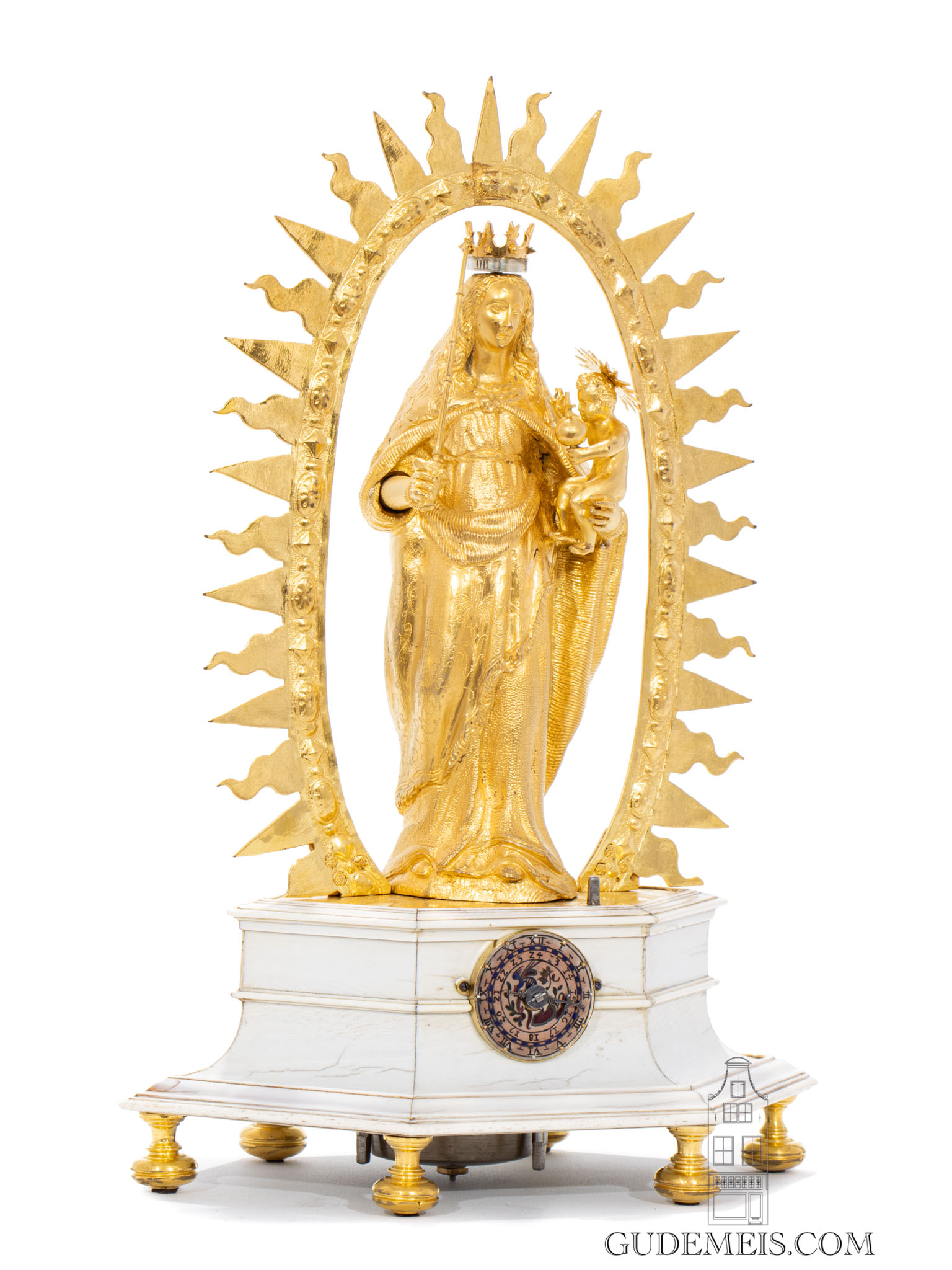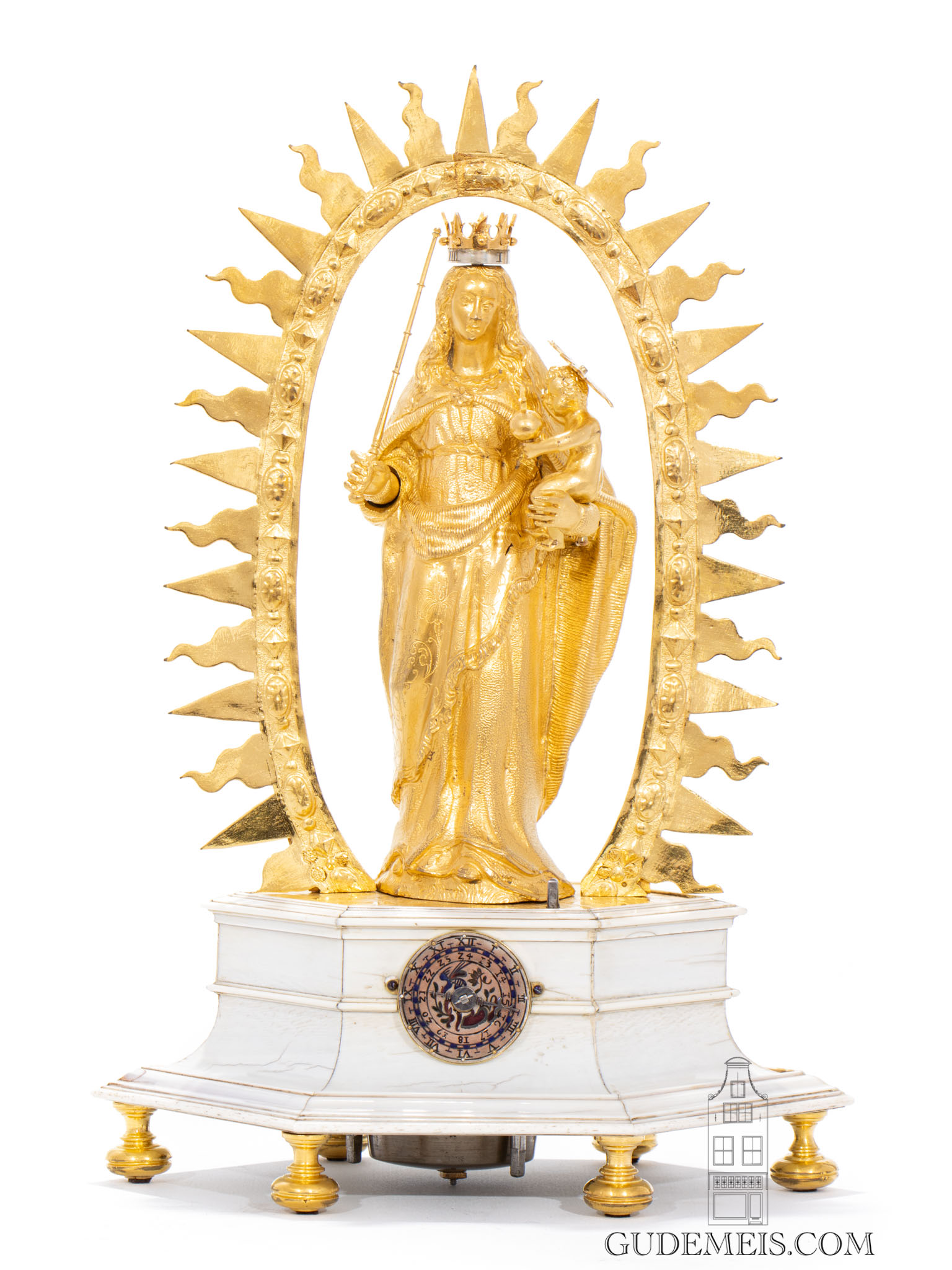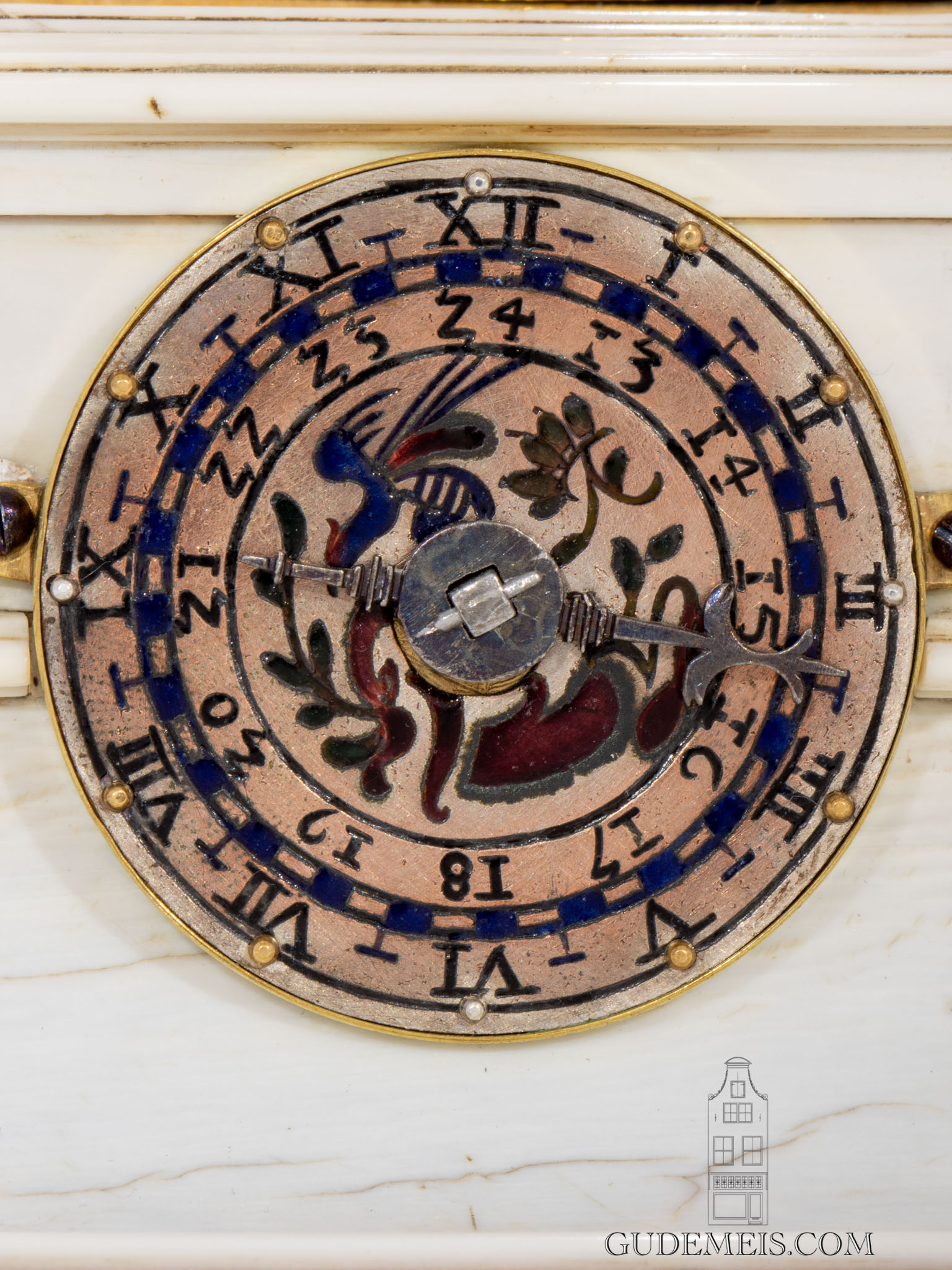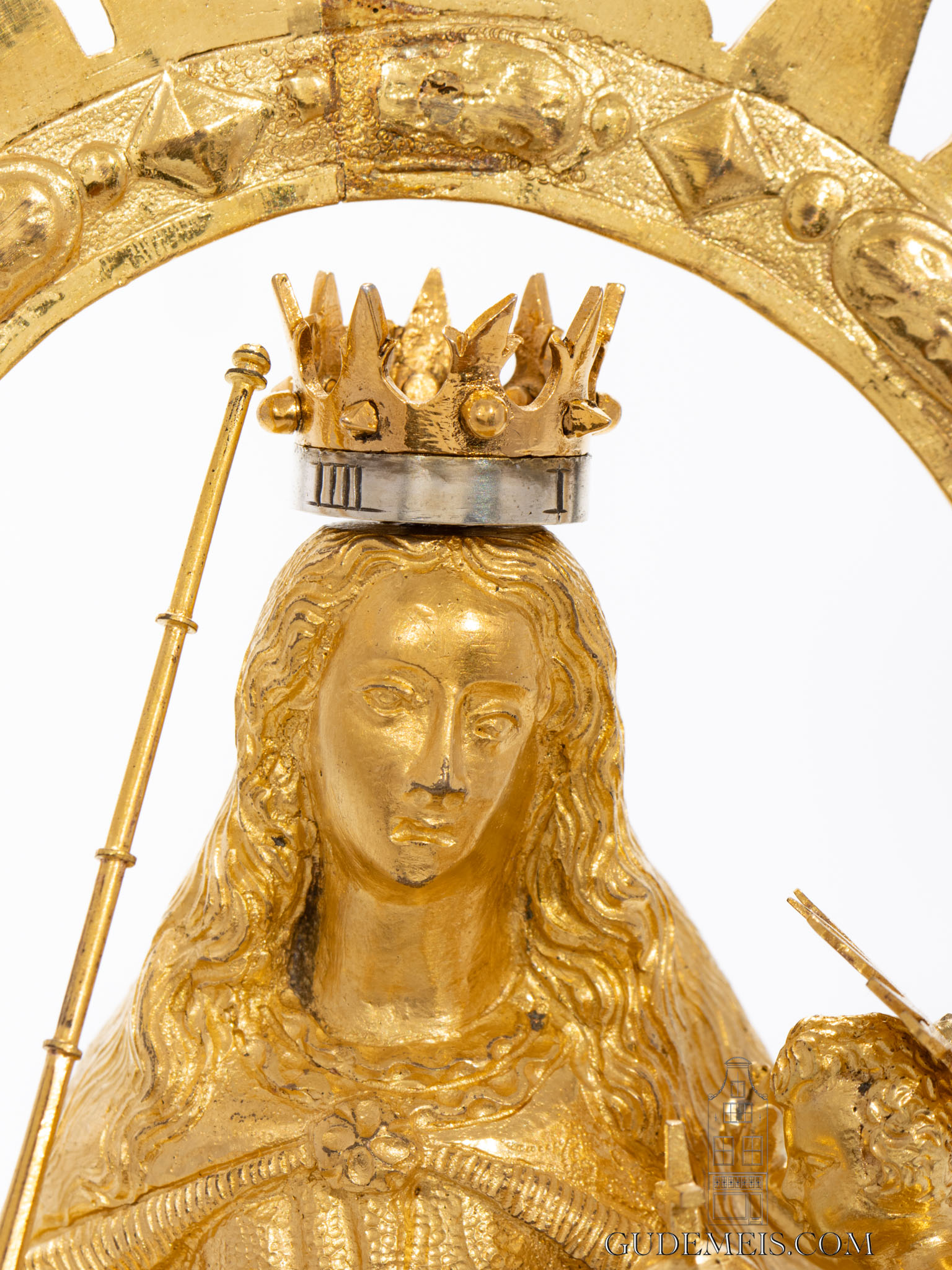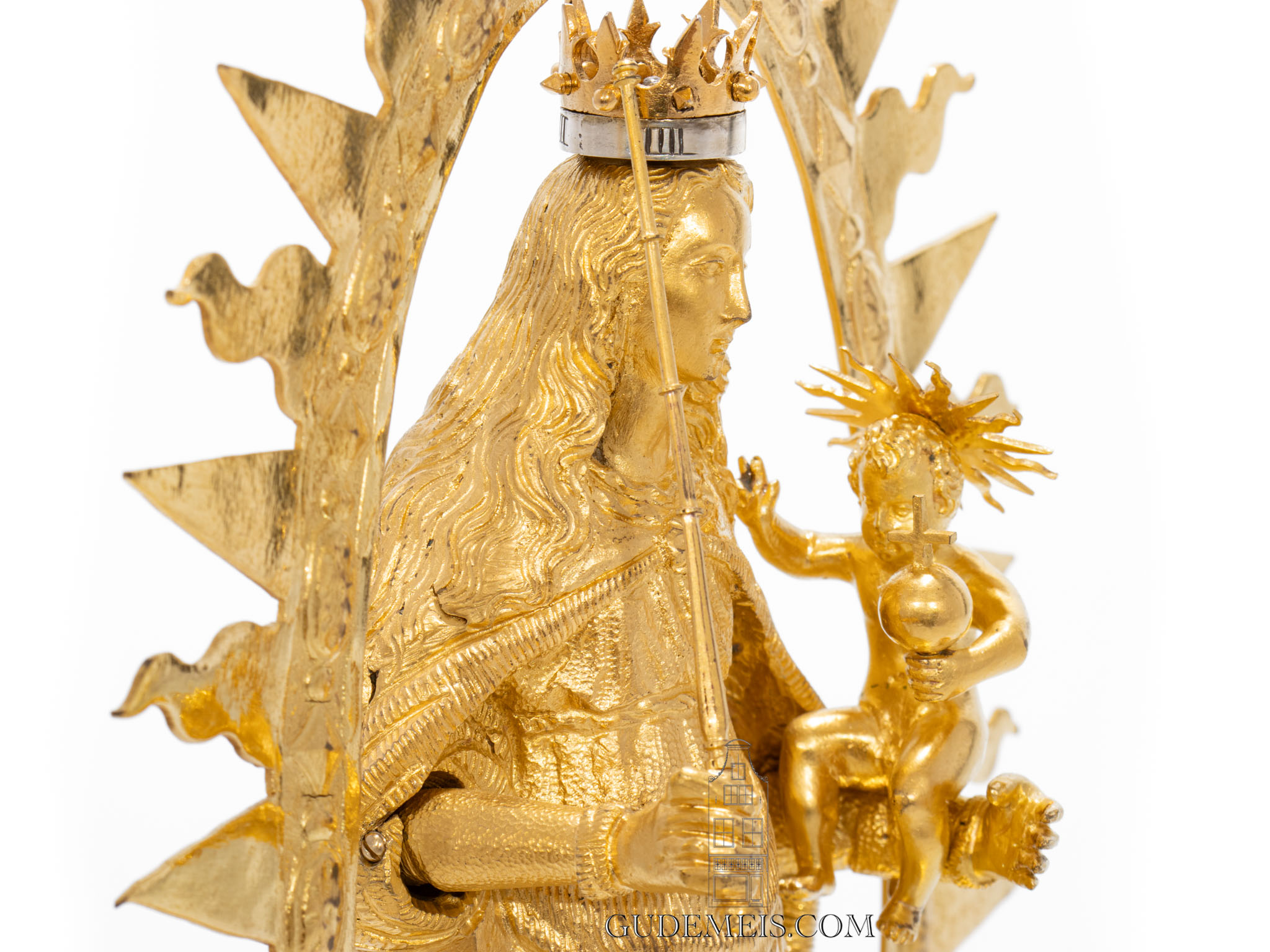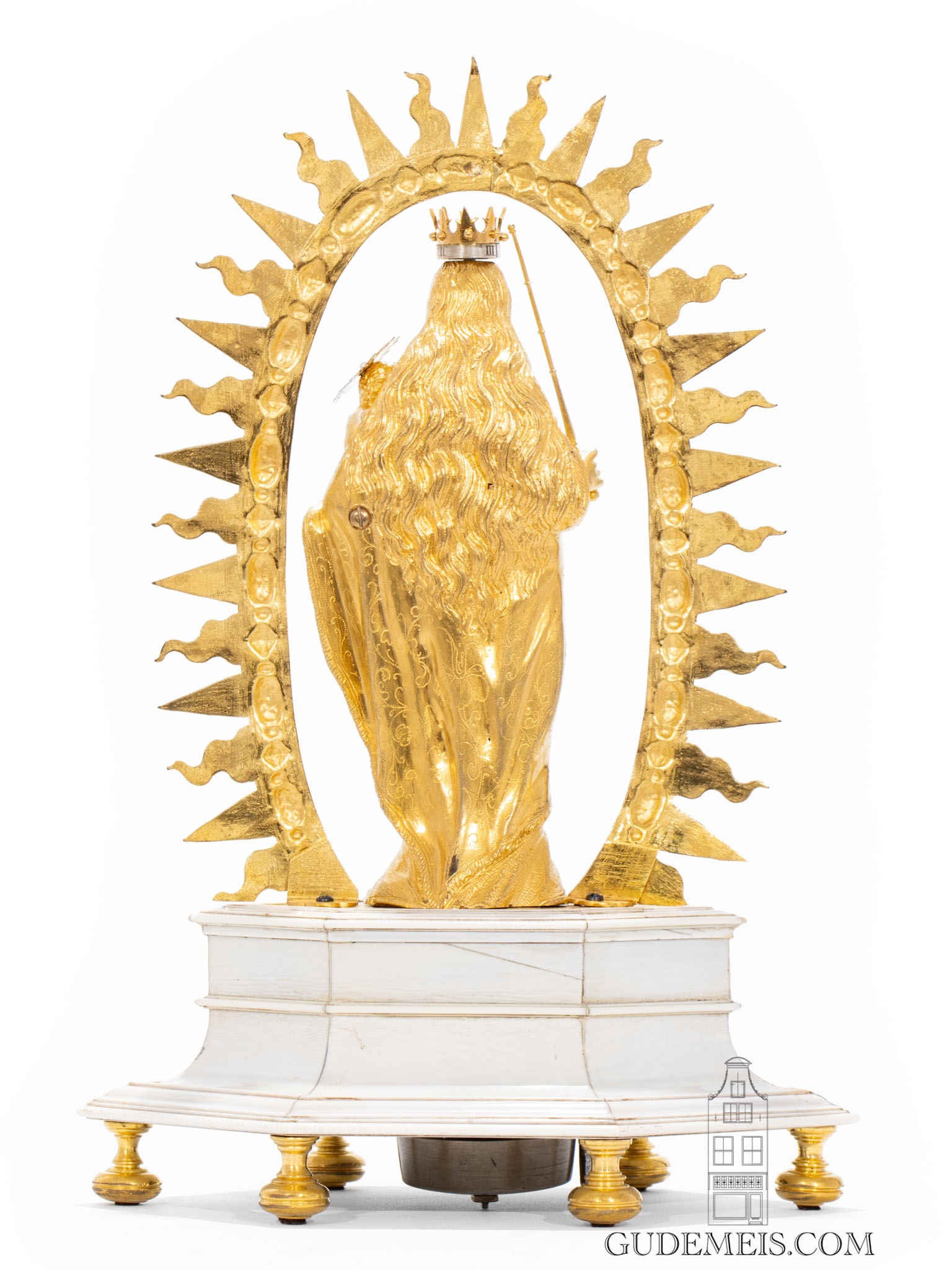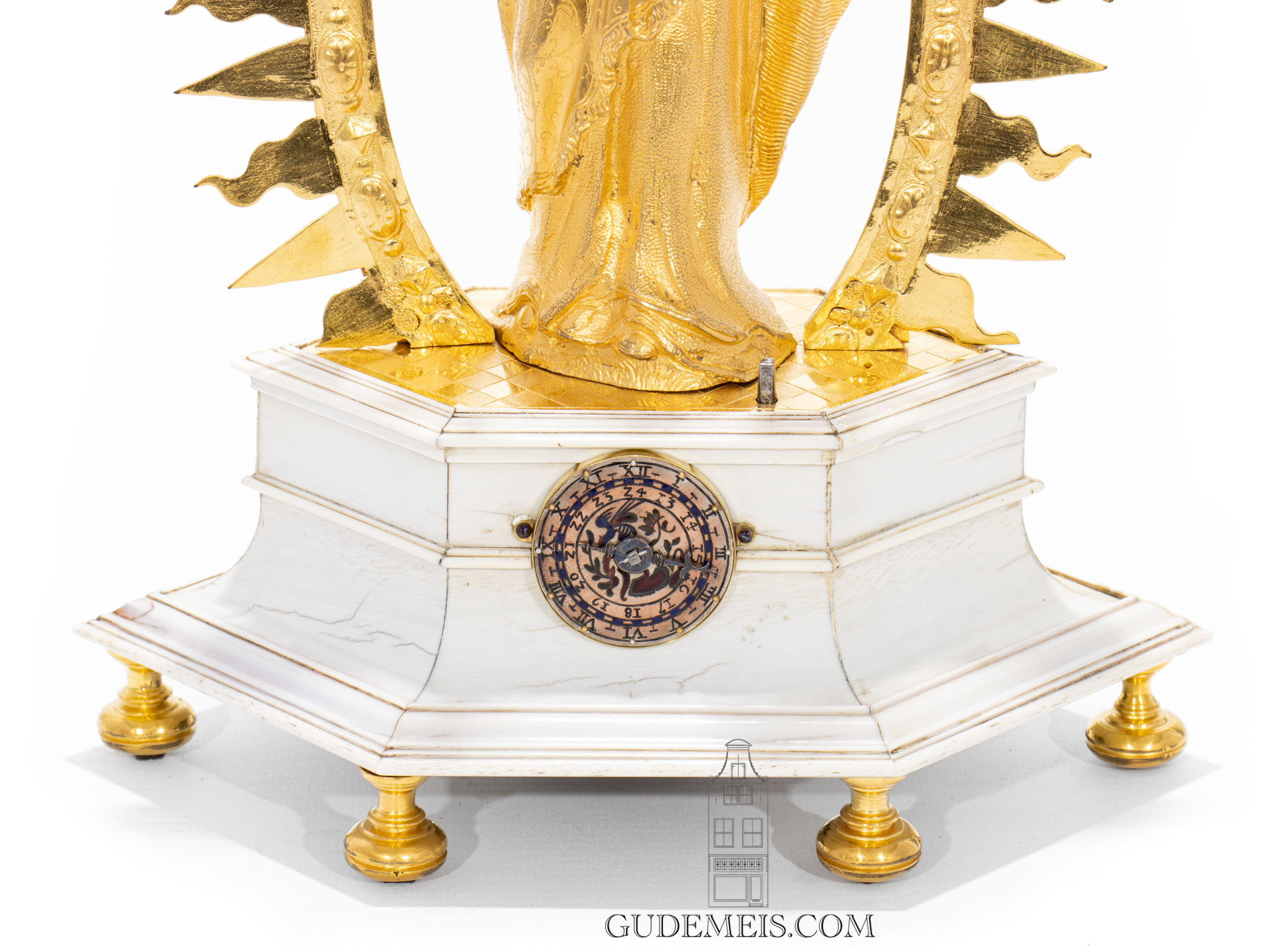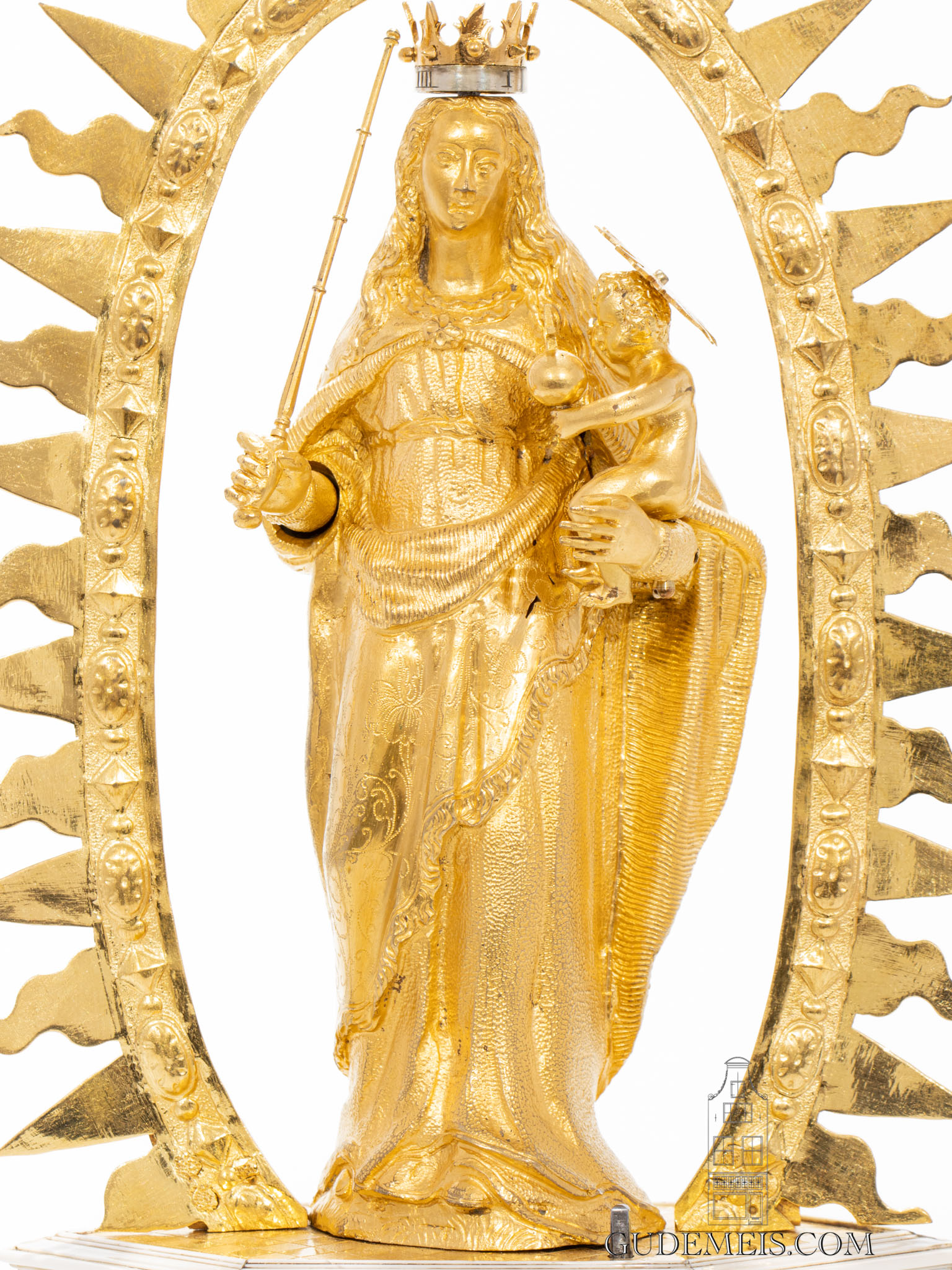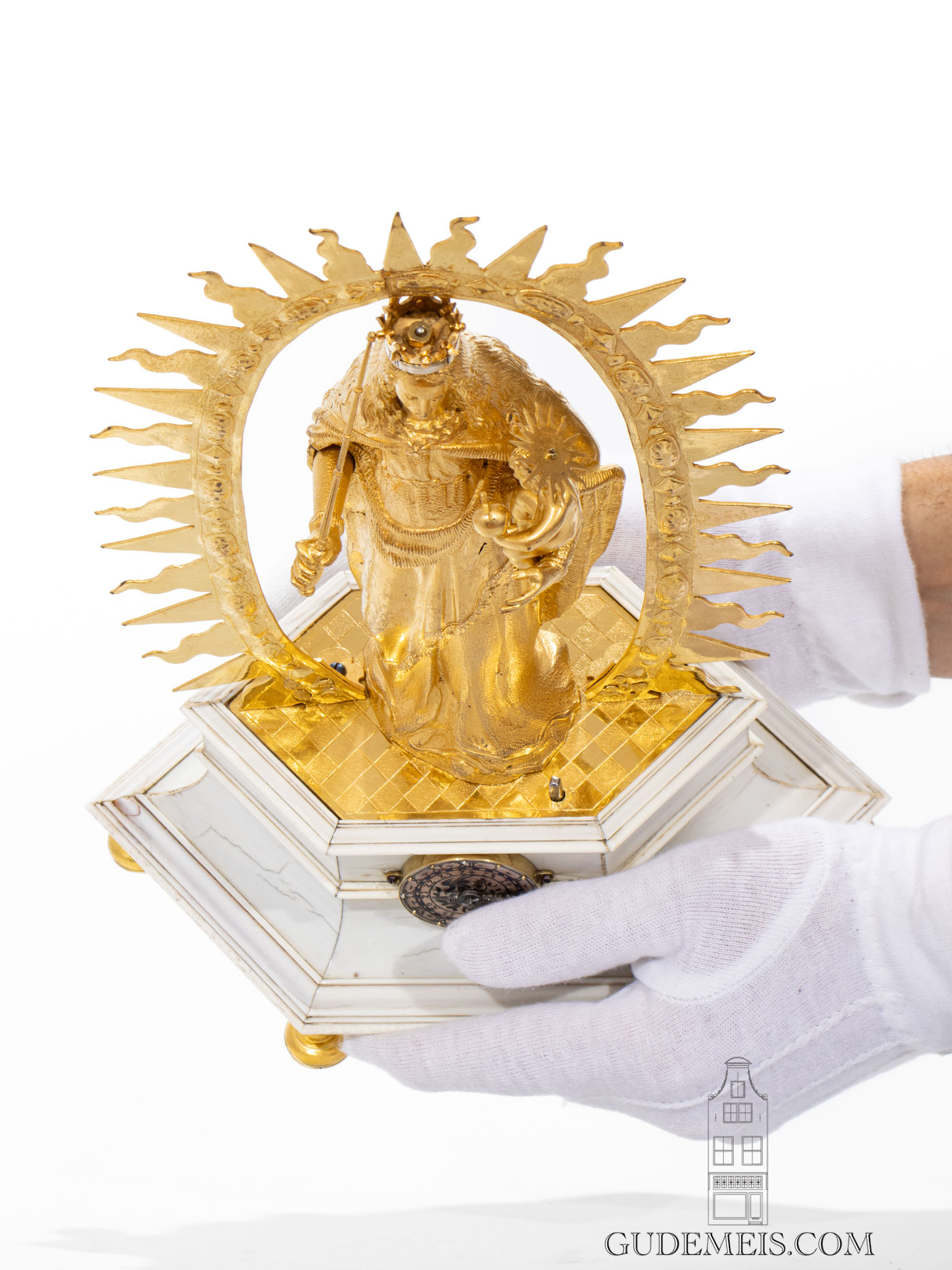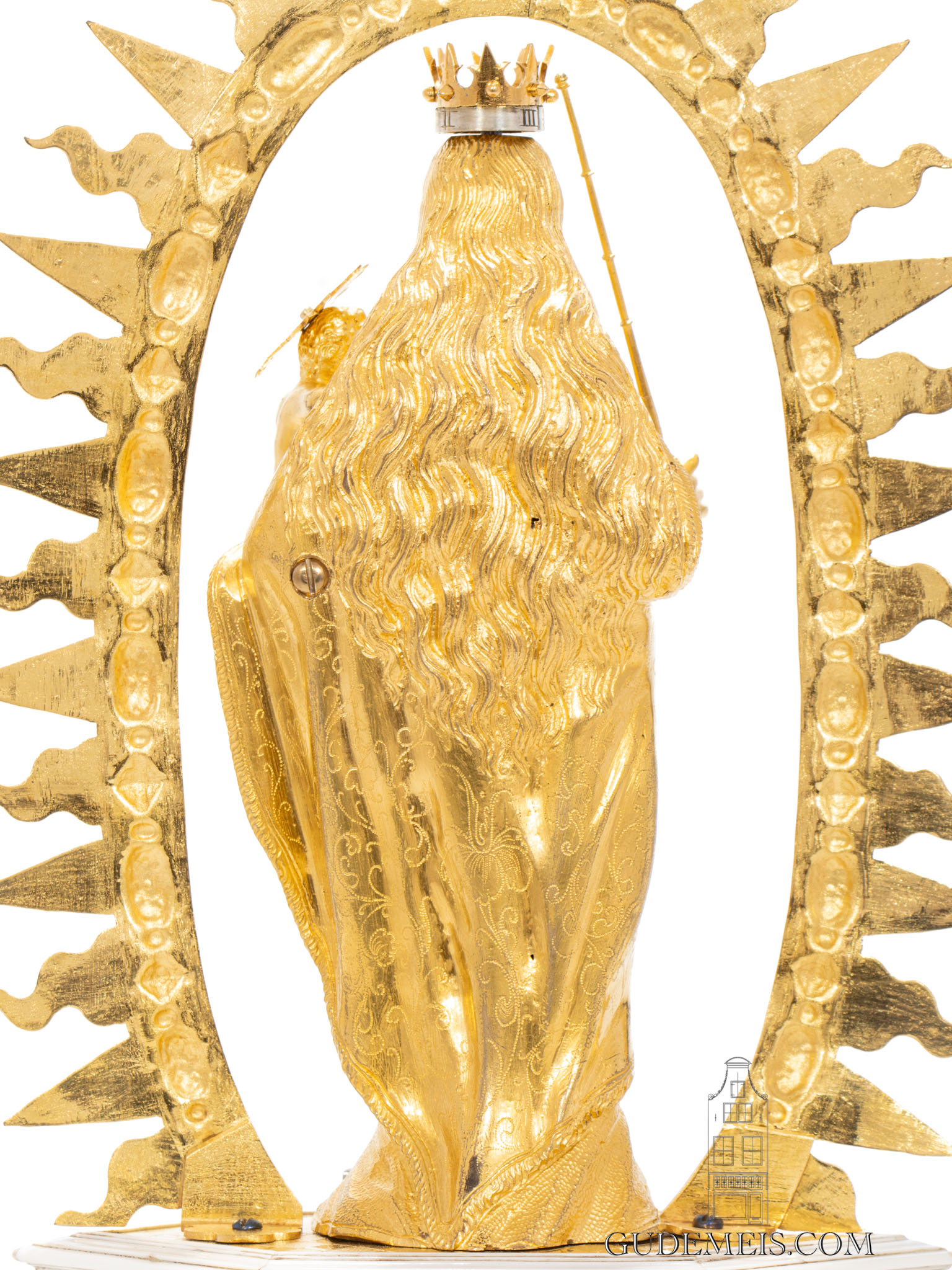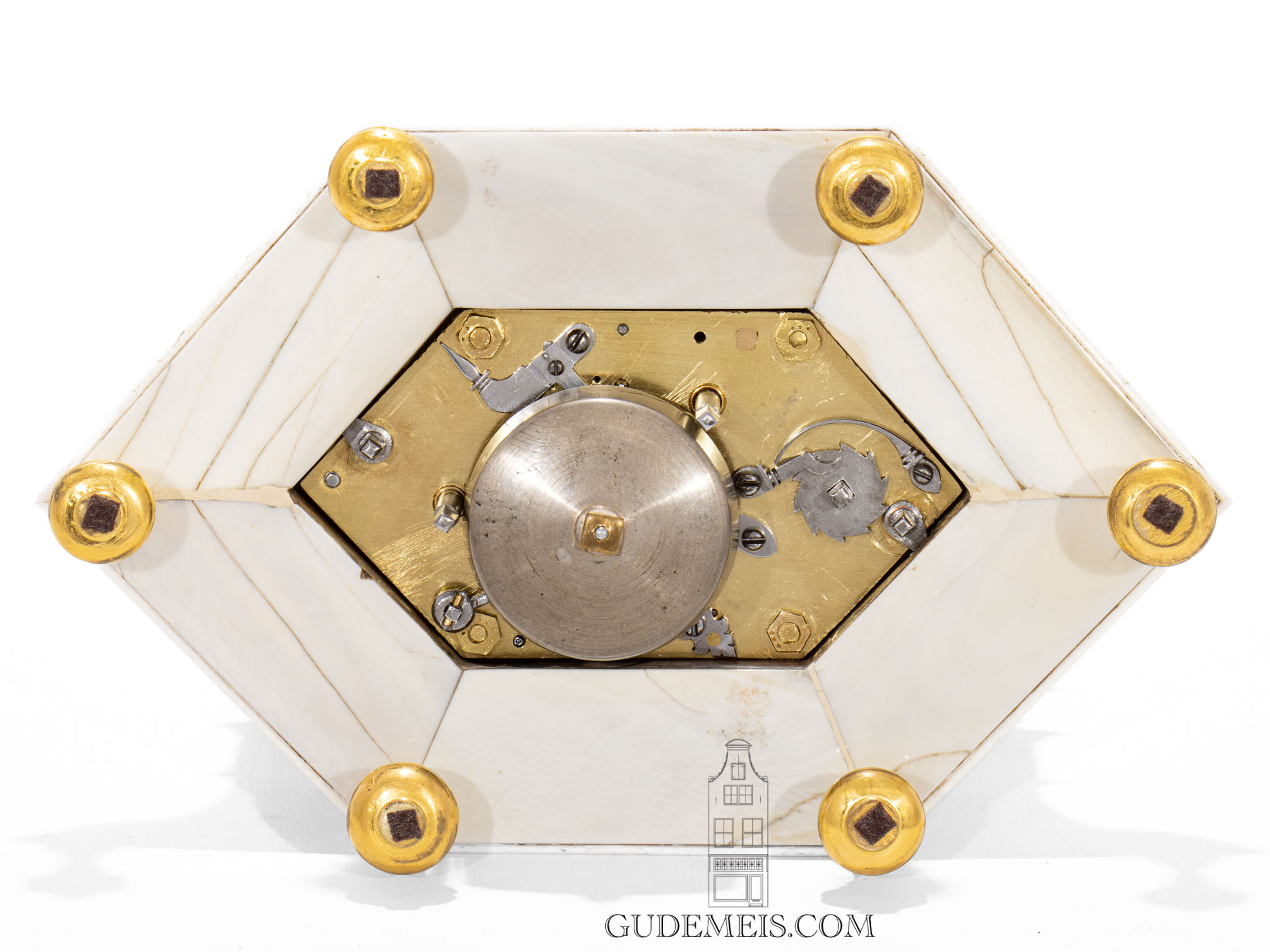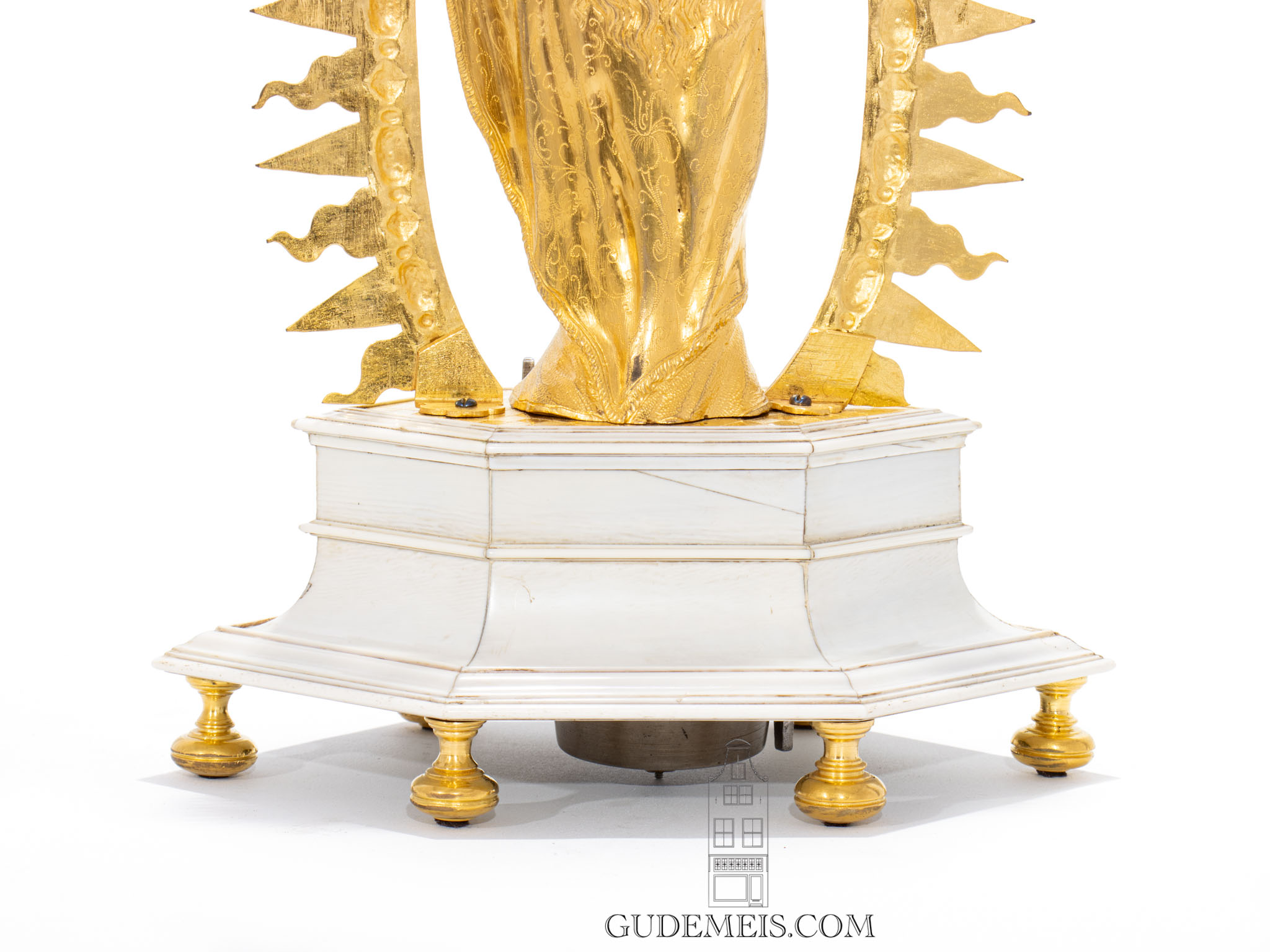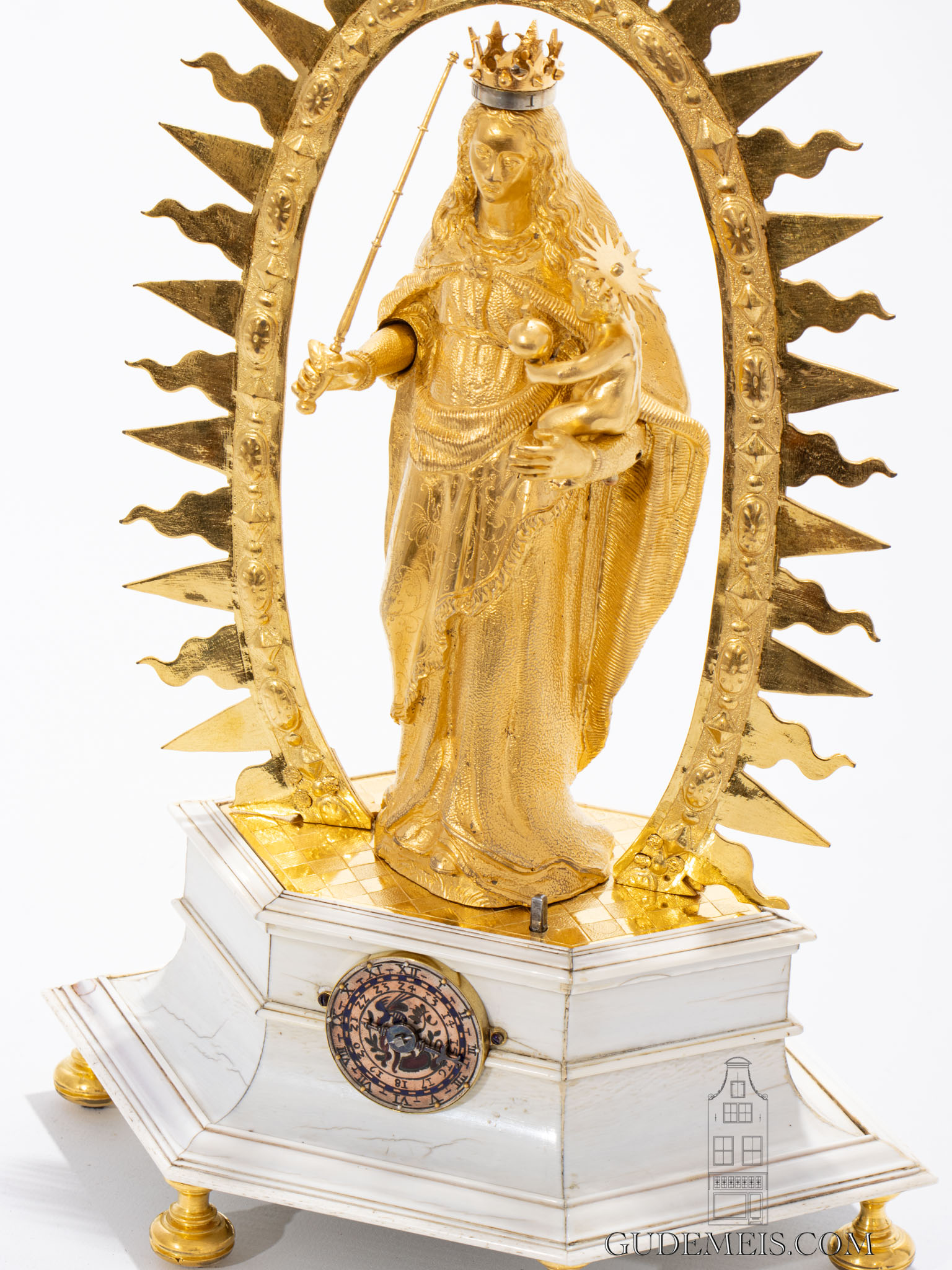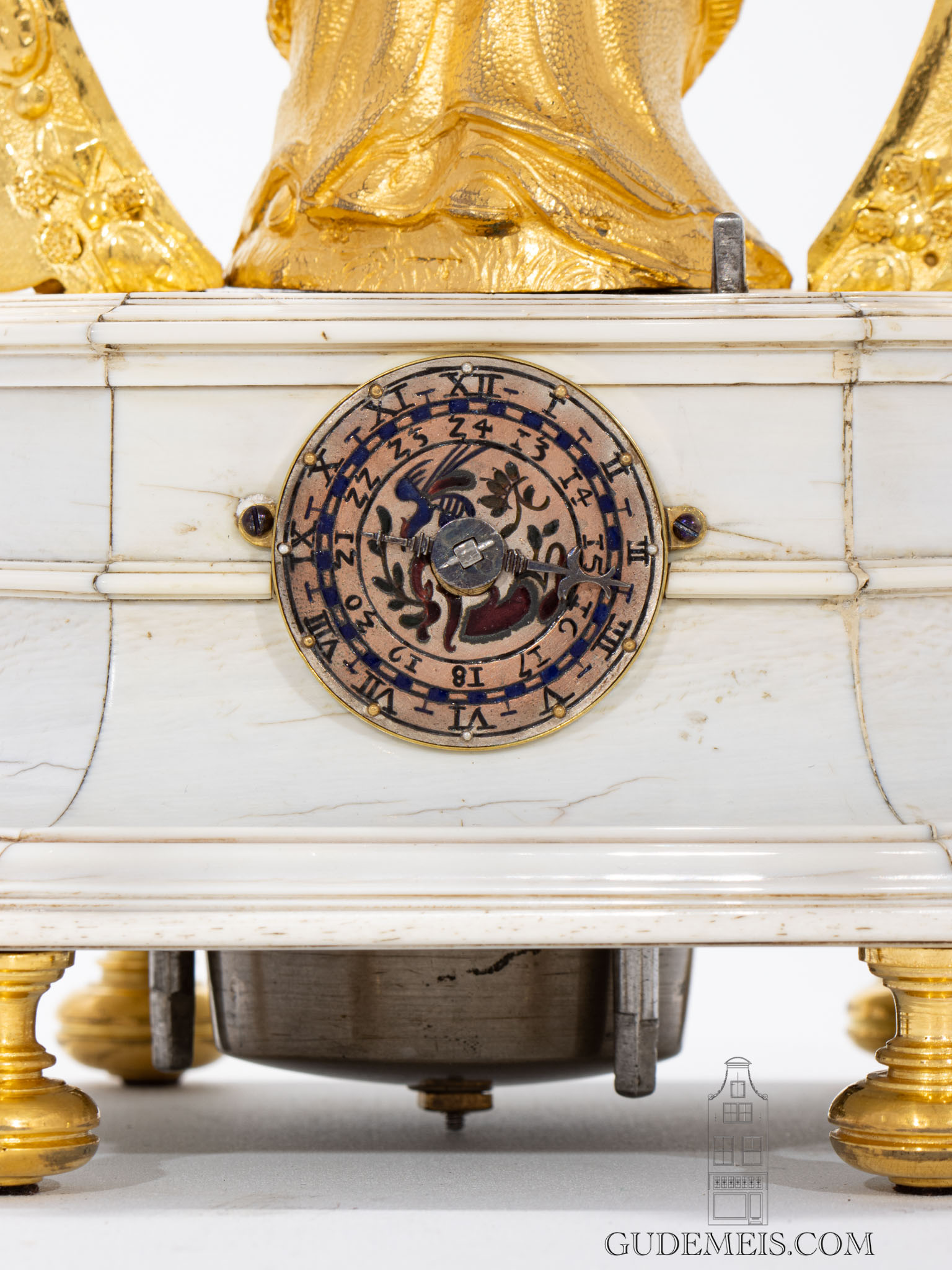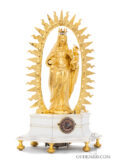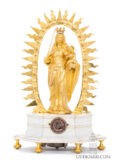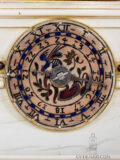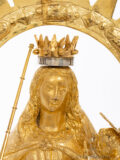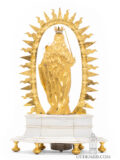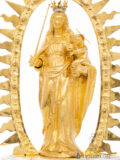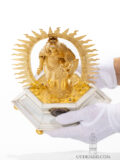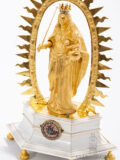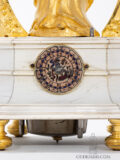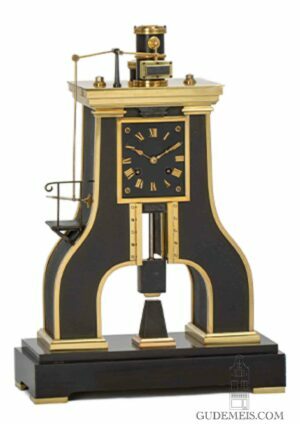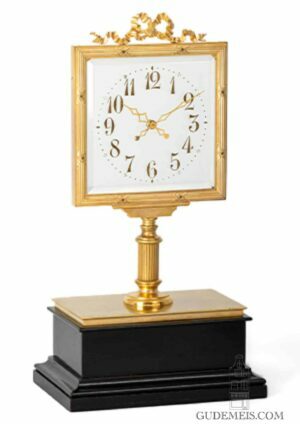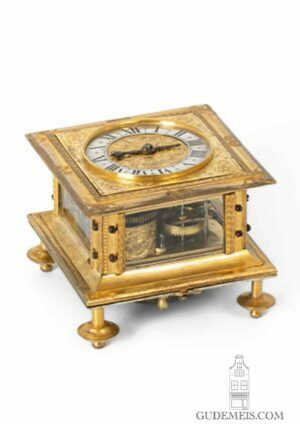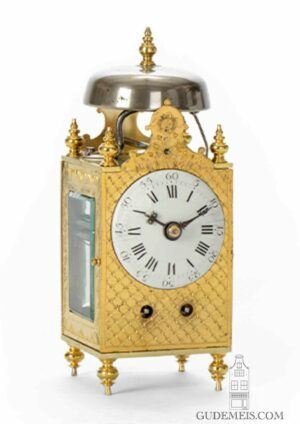A South German Renaissance gilt brass sculptural table clock, Madonna and Child, circa 1630.
Description
Augsburg and Neurenberg
Early in the 16th century a clockmaking tradition emerged in what is now southern Germany, with Augsburg and Nuremberg as the main centres. The quality delivered by the makers was very high. This was partly because clock guilds were established that had very strict entry requirements for those who wanted to become master clockmakers. Very detailed specifications were laid down on what a masterpiece should look like and what complications it should have. Without exception, the clocks were made with very high attention to detail and decorations were not only limited to the exterior of the case but were also applied to movement parts. In this period, clocks were very rare and expensive. And for many, clocks must have been experienced as something magical with their ticking movements, the sometimes complicated indications, the sound of the striking mechanism and movement of the sometimes applied automata. It made these clocks not only practical timekeepers but also status symbols that their owners liked to show off. This clock surmounted by a Madonna and Child could very well have been made for a high clergyman. It is not only a beautifully made statue but it also has an automaton which moves the madonna’s arm with the striking. The admiration and wonder this clock must have aroused must have been considerable.
Champlevé dial
The 3.7-cm silvered champlevé dial has Roman numerals I-XII before noon and Arabic numerals 13-24 for after noon. These two rings are separated by a border of blue enamel rectangles. The outer edge has touching knobs. In the centre there is an enamelled bird and leaves. On top of the sculpture is a rotating crown indicating the quarters.
Verge escapement
The going train of the hexagonal movement is driven by a spring barrel with fusee and chain and has a duration of a day. It is regulated by a verge escapement combined with a plain iron balance. The striking train has a spring barrel and strikes the hours on a bell by means of a countwheel. The Madonna’s arm is connected to the striking mechanism and moves with the striking.
Madonna with child
The clock is mounted in a moulded hexagonal ivory base. On top of this, on a geometrically decorated platform, is an image of the Madonna with child in a halo.
Carol Schmidt
Klaus Maurice’s leading book, Die Deutsche Räderuhr lists a small number of similar clocks in Band II. Interestingly, one of these clocks features an identical madonna and child and was made by the famous Augsburg clockmaker Carol Schmidt around 1620. Klaus Maurice, Die Deutsche Räderuhr Band II no 397.
